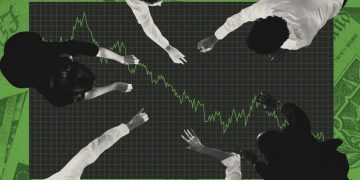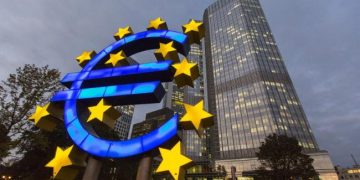The rise of Environmental, Social, and Governance (ESG) investing has been one of the most significant trends in the financial world in recent years. As societal awareness of environmental and social issues increases, investors are increasingly looking for ways to align their portfolios with their values. ESG investing allows individuals and institutions to support companies that meet certain ethical, environmental, and governance standards. But the question remains: Can ESG investments outperform in the long run? To answer this, we must look at their performance over the past decade, the challenges of ensuring true ESG compliance, and the future evolution of ESG investing.
Introduction: The Rise of ESG Investing
The concept of ESG investing has its roots in the socially responsible investing (SRI) movement, which dates back several decades. However, ESG investing, as it is recognized today, began to gain traction in the early 2000s. This shift was propelled by a growing understanding of the risks posed by environmental degradation, social inequality, and poor corporate governance. For example, issues like climate change, labor rights, and corruption became increasingly important to investors, who sought to mitigate these risks by investing in companies with better ESG practices.
Over the past decade, ESG investing has seen explosive growth. According to Morningstar, global sustainable fund assets surged from $5 trillion in 2019 to nearly $10 trillion by 2025. Institutional investors, including pension funds, endowments, and sovereign wealth funds, have poured billions of dollars into ESG-focused funds, and even traditional asset managers have begun launching ESG-themed products. Many investors now believe that companies that score well on ESG metrics are likely to perform better over the long term due to their lower exposure to environmental, social, and governance-related risks.
Moreover, the rise of ESG investing has been supported by the growing demand for transparency and accountability in corporate practices. Investors are increasingly looking for companies that not only deliver strong financial returns but also contribute positively to society and the environment. This has led to the integration of ESG factors into the investment process, where they are used as a way to assess the long-term sustainability of a company’s operations.
Performance Comparison: How ESG Investments Have Performed in the Last Decade
The performance of ESG investments has been a topic of intense debate. On one hand, ESG proponents argue that companies with strong ESG practices are better positioned to thrive in a rapidly changing world. On the other hand, skeptics question whether ESG factors truly translate into superior financial returns.
Over the last decade, ESG investments have generally performed well, with many ESG-focused funds delivering competitive returns compared to traditional investment benchmarks. For example, a 2020 study by Morningstar found that sustainable equity funds in the U.S. outperformed their conventional counterparts by an average of 1.6 percentage points per year from 2014 to 2019. Similarly, a 2021 report by MSCI revealed that companies with strong ESG performance tend to exhibit lower volatility and better long-term growth potential.
Several key factors help explain this trend. First, companies with strong ESG practices are often better at managing risks related to environmental regulations, social issues, and corporate governance. For example, companies that are proactive in reducing their carbon footprint may avoid future regulatory costs associated with climate change. Similarly, companies with strong labor practices and good governance structures are less likely to face costly lawsuits or shareholder activism.
Second, ESG investments are often concentrated in sectors that have demonstrated strong long-term growth. For instance, renewable energy, technology, and healthcare are sectors that attract ESG investors due to their positive environmental and social impact. As these sectors have experienced significant growth over the past decade, ESG funds that are overweight in these areas have benefitted from strong capital appreciation.
Finally, the outperformance of ESG investments can be attributed to the growing demand for responsible investing. As more investors, particularly millennials and Gen Z, seek to align their portfolios with their values, the demand for ESG investments has driven up the prices of companies with strong ESG metrics. This trend is likely to continue as more investors prioritize sustainability and social impact in their investment decisions.
However, it is important to note that the performance of ESG investments is not uniform across all markets or asset classes. Some ESG funds may underperform due to sector or geographic biases, and the quality of ESG data and ratings can vary significantly. Furthermore, short-term performance may not always reflect the long-term potential of ESG investments, which are often focused on sustainability and resilience rather than immediate financial returns.
Challenges: The Challenges of Measuring and Ensuring True ESG Criteria
While ESG investing has gained popularity, it is not without its challenges. One of the most significant hurdles is the lack of standardized ESG metrics and reporting. Unlike traditional financial metrics, such as earnings per share or return on equity, ESG factors are inherently qualitative and can vary widely depending on the methodology used to assess them. As a result, investors may struggle to determine which companies genuinely meet ESG criteria and which are merely “greenwashing” — the practice of misleading consumers or investors into believing that a company is more environmentally or socially responsible than it really is.
The absence of standardized ESG reporting also makes it difficult for investors to compare companies on a like-for-like basis. For example, one ESG rating agency may give a company a high rating for its environmental performance, while another may rate the same company poorly based on its governance practices. This lack of consistency creates confusion for investors and undermines the credibility of ESG ratings.

In addition, there is often a disconnect between the ESG metrics reported by companies and the actual impact of their operations. For example, companies may report on their carbon emissions or diversity efforts, but these metrics may not fully capture the broader environmental or social impact of their business activities. This can make it challenging for investors to assess the true sustainability of a company’s operations.
Another challenge is the potential trade-off between financial performance and ESG considerations. While many ESG-focused companies are expected to perform well in the long run, some ESG strategies may result in underperformance in the short term. For example, companies that prioritize environmental sustainability may face higher upfront costs associated with implementing green technologies or sourcing sustainable materials. Similarly, companies with strong social responsibility initiatives may have to allocate more resources to employee welfare, potentially reducing short-term profitability.
These challenges highlight the complexity of ESG investing and the need for improved data, reporting standards, and transparency. As the ESG landscape evolves, regulators, companies, and investors must work together to create a more consistent and reliable framework for evaluating ESG performance.
Future Outlook: How ESG Investing Might Evolve and Affect Global Markets
Looking ahead, ESG investing is expected to continue to evolve and play an increasingly important role in global financial markets. As the demand for responsible investing grows, more companies will be incentivized to adopt sustainable practices, which could lead to broader positive changes in corporate behavior.
One of the key trends to watch is the rise of impact investing, which focuses not only on financial returns but also on generating measurable social and environmental impact. Impact investing is likely to become a more prominent strategy within the ESG space, as investors seek to align their portfolios with their values while still achieving competitive financial returns.
Another important development is the growing focus on “ESG integration” — the process of embedding ESG factors into the investment decision-making process. Instead of simply selecting companies based on their ESG scores, ESG integration involves assessing how environmental, social, and governance factors might impact a company’s long-term financial performance. This approach is likely to become more common as investors recognize that ESG risks and opportunities are often closely tied to financial performance.
As regulatory pressure increases, governments and financial regulators are expected to introduce more stringent rules around ESG disclosures and reporting. In Europe, for example, the European Union has already introduced the Sustainable Finance Disclosure Regulation (SFDR), which requires asset managers to disclose how they integrate ESG factors into their investment strategies. Other regions are likely to follow suit, further pushing companies to adopt more transparent and standardized ESG practices.
Finally, technology is expected to play a significant role in the future of ESG investing. Innovations in data collection, artificial intelligence, and blockchain could improve the accuracy and transparency of ESG reporting, making it easier for investors to assess companies’ sustainability practices. This technological progress could also help overcome some of the current challenges related to greenwashing and inconsistent ESG ratings.
Conclusion
ESG investing has proven to be a viable and increasingly popular strategy for investors who want to align their portfolios with their values. Over the past decade, ESG investments have generally performed well, with many funds delivering competitive returns compared to traditional investments. However, challenges remain, particularly in terms of measuring and ensuring true ESG compliance. As the ESG landscape continues to evolve, investors can expect increased regulatory oversight, improved data reporting, and greater integration of ESG factors into investment decision-making.
Looking to the future, ESG investing is likely to continue its upward trajectory, with growing demand from both retail and institutional investors. While there are still hurdles to overcome, the potential for ESG investments to outperform in the long run remains strong, especially as companies and investors increasingly recognize the financial value of sustainability and responsible business practices.



































